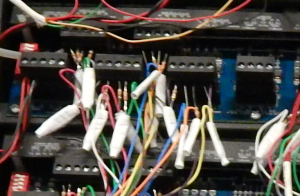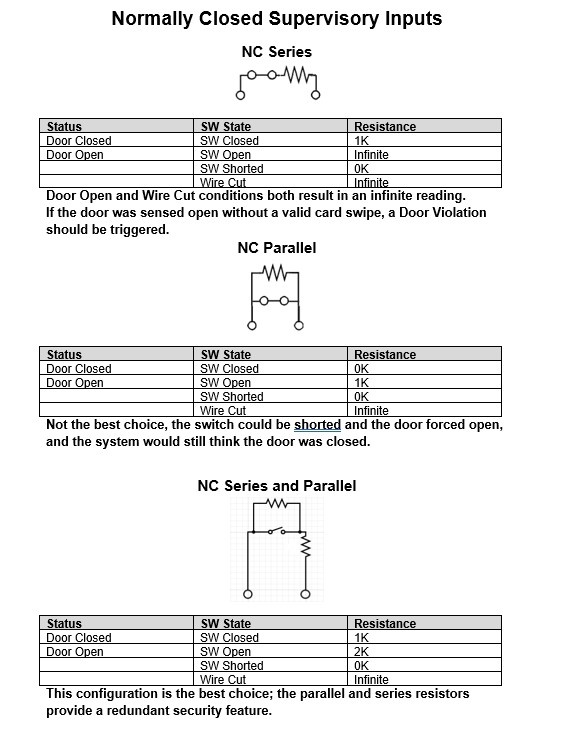Alarm Circuit Supervision – Why You Should Care

The wrong place for EOL resistors.
Nearly every project we work on, we recommend that alarm initiating devices, especially door contacts, are to be configured using end of line (EOL) resistors for 4-state supervisory circuits. The actual resistance value and configuration can vary by system manufacturer, but typically it involves wiring a 1K Ohm resistor in series and another in parallel with the switch, at the terminating device itself (not in the panel or junction box above the door). This ensures that we have circuit supervision from the alarm panel (or card reader panel) all the way down to the device termination, so we know if the device is in a normal state (1), an alarm state (2), shorted state (3), or cut state (4). This is known as 4-state supervision, because it distinguishes between 4 possible scenarios for the supervised device.
For an example of why you need device supervision, I recently had a high profile client contract me to do a security survey of their research building. One of the basement doors had a door contact on it that was not supervised and had been cut and shorted about 30 feet away from the door. The card access system monitoring the door didn’t use 4-state monitoring and the door appeared to be “closed” all the time, even though it was commonly known that maintenance staff actively used the door for that area. It had been in that state for several years before it was identified and later repaired.
This simple addition offers greater security to the system, yet often gets omitted by vendors in the installation because it requires extra time and expense, and even causes confusion with some installers (really). Worse, we sometimes end up with installations like the picture above that adds the EOL resistors to the panel with Dolphin connectors. This type of installation does not offer any real security, and potentially introduces the opportunity for spurious connections inside the panel. Thankfully, vendors like GRI manufacture magnetic contacts that come pre-assembled with the resistor array included. They include 1K, 2K, 3.3K, 5.6K, 10K, and 33K resistors in a variety of contact packages, and also sell resistor packs for retrofit installations.
Years ago, one of the best explanations I ever read about alarm circuit supervision was from an Andover Controls card access panel installation guide. I had learned already about 4-state supervision and why you should do it, but the following illustration shows it more clearly than anywhere else I ever saw it. I ran across it again the other day and decided I would put it in an article here on the site. The illustration below shows how the first two iterations of EOL resistors do not offer any significant line supervision, and could easily be defeated. The third configuration offers 4 unique resistance values that correspond with the 4 possible state conditions.
**Update, some time ago a very astute technician caught an error in the series and parallel schematic we included below (which came from Andover), saying the schematic was wrong. He was absolutely right as the way it was drawn it would not reliably provide 4-state supervision. We have since corrected the schematic and thank him for the observation.

Posted in: Security Technology, Training
Leave a Comment (0) ↓